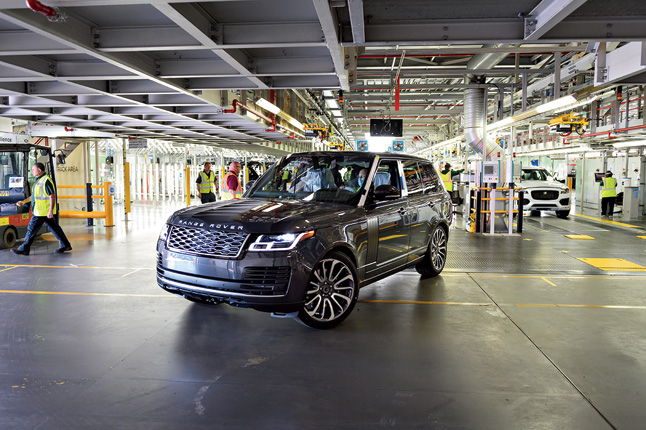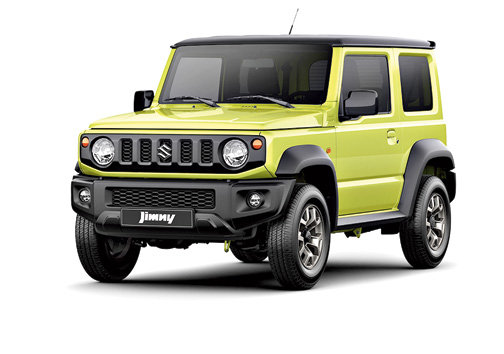If anyone had asked either the Suzuki Jimny that went on sale in Japan in 1970, or the Range Rover that rolled out a couple of months later in the UK what they would be half-a-century down the line, neither could have answered correctly.
There were no ‘sport utility vehicles’, or SUVs, back then, although the seeds of the idea had been seen in different vehicles. How things change!
Sukuki Jimny
When the first Jimny, designated LJ10 then, went on sale, it was a pioneer of sorts in Japan. Suzuki had been developing a go-anywhere utility vehicle that would fit Japan’s stringent rules governing size and engine capacity. This three-seater carrying the spare tyre behind the front passenger seat was the result. The engine was a tiny two-cylinder, 360cc, air-cooled two-stroke making 25bhp, which is possibly the smallest engine to have ever powered a 4x4. The body was bolted on to a separate chassis. So it was tough. The whole thing tipped the scales at about 600kg. Its lightness and four-wheel traction gave it off-road cred and it could go into terrain that 2x4s couldn’t.
For all its capabilities, however, the LJ series remained a workhorse until, in 1975, Suzuki started exporting it to Australia with a slightly more powerful 550cc, three-cylinder motor. This one also gained a fourth seat, had the option of hard and soft tops and people soon spotted that this was a fun vehicle apart from being useful. The story had taken an unexpected turn. Soon came the LJ80 Jimny with a bit more flair, a bigger four-cylinder, 41bhp engine and exports to Europe.
In 1981, there was a model change and the second generation Jimny, what came to India as the Maruti Gypsy, hit the scene. And we know very well what that could do. The first SJ410 version started with a 1-litre engine that in a few years got upgraded to the SJ413 with a 1.3-litre 66bhp engine. In India, this tough little thing was used by all sorts of utilities, security forces, rallyists and off-roaders.
That made way for the third-gen model in 1998. By this time people were having no trouble comparing it with macho, muscle-flexing off-roaders despite its diminutive size. Since it remained pretty basic, people did all sorts of mods to it and it soldiered on for two whole decades till, in 2018, the latest model went on sale. The rounded edges were gone for a totally boxy look, but the endearing qualities have remained. Showed at Auto Expo 2020 in Greater Noida back in February, it is expected to head to our shores with possibly a 100bhp petrol motor. With the Maruti Gypsy gone, we could do with something to bridge the generation gap.

Range Rover 2012 Courtesy: Suzuki Motor Corp, Jaguar Land Rover and TT Archives
Range Rover
Within a couple of years after the Land Rover went on sale in post-World War II UK, its manufacturer, Rover, started thinking of making a bigger, more comfortable vehicle. Development started in the early 1950s, got shelved later and was revived again in the mid-1960s. Tested as prototypes that were called Velar, a name derived from the Italian for veil, the Range Rover hit the showrooms in 1970.
The original Range Rover had only two doors and a split tailgate. But there was a spacious second row of seats too. It had permanent 4x4 and a low-ratio gearbox for going off-road. The 3.5-litre petrol V8 produced 135hp and was mated to a four-speed manual gearbox. The low ratios could take it through almost any kind of terrain. After 11 years on the road, came the four-door version in 1981.
The second-generation model rolled out in 1994 was derived from the first. It was the first one with a diesel engine, a 2.5-litre BMW unit, apart from a petrol V8 from Rover. Departing from the original design, this one had rectangular headlamps that were in vogue at that time. It was plusher too. Range Rover’s ascent up the luxury ladder had begun.
While all this was happening, Land Rover was changing hands every few years. By the time the third-generation model, which had largely been developed by former owners BMW, was launched in 2002, the company was owned by Ford. Still, the vehicle shared parts with the BMW 7 Series and had a V8 sourced from the company. By this time, a luxury SUV was no longer an oxymoron and the Range Rover was clearly one of them. This was also the model in which the vertical slats behind the wheel arches were first featured.
Before the next model change and the launch of the fourth-generation Range Rover, Land Rover had been bought by Tata Motors from Ford and it started operating as an independent company again. So, the 2012 model was largely an in-house effort. Today, this model competes head-to-head with the German trio in the luxury SUV space.
At the time of its launch, this model was the world’s first all-aluminium SUV. It today has a system that is effectively cruise control for the off-road mode, justifying maybe its reason for being in the first place.
When the Range Rover was launched, British car magazine Autocar had written: “We have been tremendously impressed by the Range Rover…. It remains to be seen how durable and reliable it will prove in service.” Well, time has told, so to speak.











